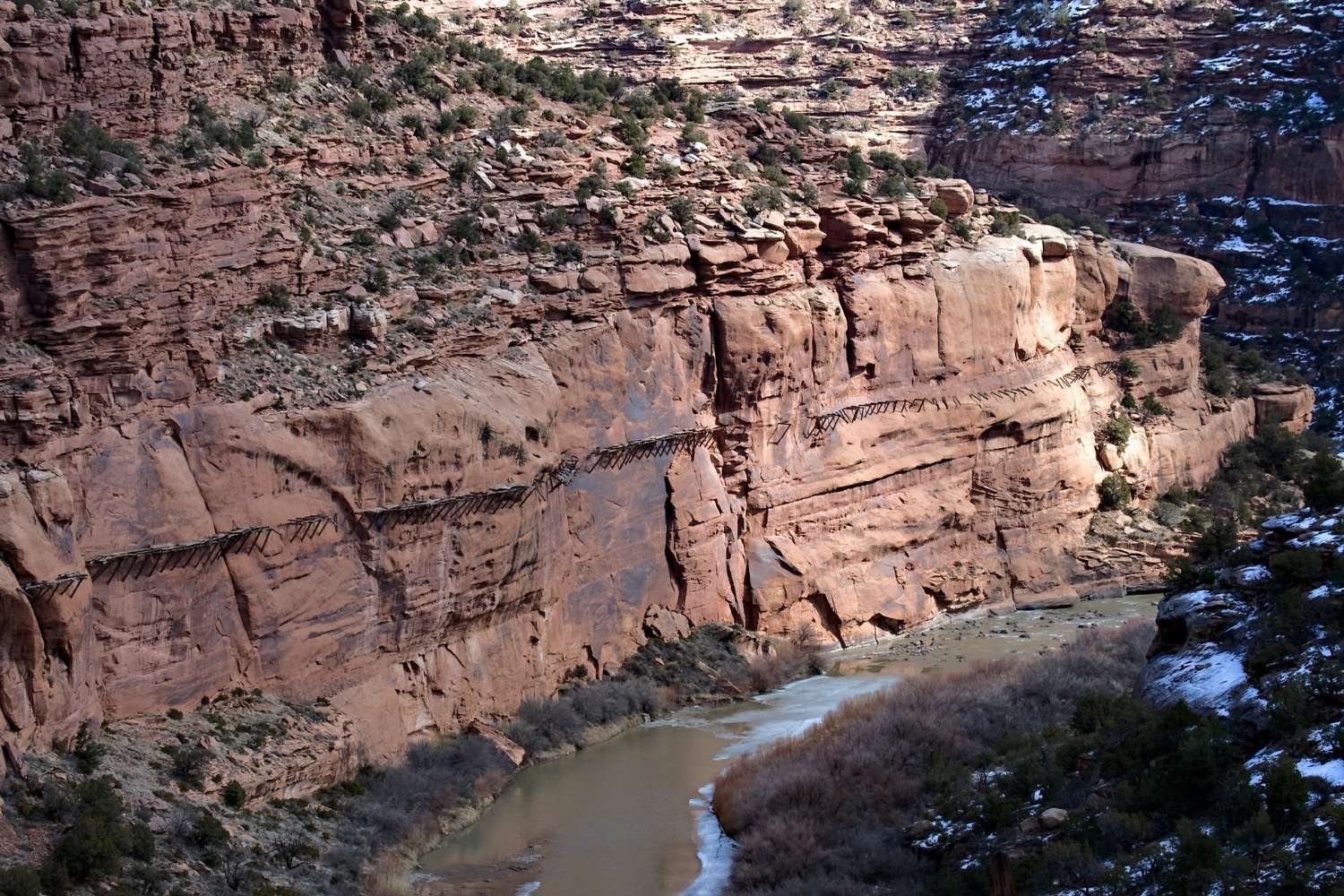Mystery Of Colorado’s Hanging Flumes

Have you ever heard of the Hanging Flumes in Colorado? These remarkable structures cling to the cliffs above the Dolores and San Miguel Rivers. Built in the late 1800s, they were used to transport water for gold mining. Imagine workers hanging from ropes, constructing wooden channels along sheer rock faces. Today, the flumes stand as a testament to human ingenuity and determination. Visiting the Hanging Flumes offers a glimpse into Colorado's rich mining history and a chance to marvel at this engineering feat. Ready to learn more about this hidden gem? Let's dive into the story behind these incredible structures.
The Enigma of the Hanging Flume
The Hanging Flume in Colorado is a marvel of engineering and a testament to human ingenuity. Suspended high above the Dolores River, this structure has intrigued historians and adventurers alike. Let's uncover the mystery behind this fascinating relic.
What is the Hanging Flume?
The Hanging Flume is a 19th-century aqueduct built to transport water for gold mining operations. It stretches for miles along the cliffs, showcasing the determination and skill of its builders.
Why Was the Hanging Flume Built?
Understanding the purpose behind the Hanging Flume helps us appreciate its significance. It was constructed to channel water to hydraulic mining sites, making it easier to extract gold from the rugged terrain.
How Was the Hanging Flume Constructed?
The construction of the Hanging Flume is a story of perseverance and innovation. Workers had to overcome numerous challenges, including:
- Steep Cliffs: Builders had to work on vertical rock faces, often suspended by ropes.
- Limited Technology: The tools and techniques available at the time were rudimentary.
- Harsh Conditions: The remote location and extreme weather made the project even more difficult.
The Legacy of the Hanging Flume
The Hanging Flume stands as a monument to the resourcefulness of its creators. It remains a popular destination for history enthusiasts and adventure seekers. Here are some key points about its legacy:
- Historical Significance: It offers a glimpse into the mining history of the American West.
- Engineering Feat: The flume is an example of early engineering prowess.
- Tourist Attraction: Its unique structure and scenic location attract visitors from around the world.
Visiting the Hanging Flume
If you're planning a trip to see the Hanging Flume, here are some tips to make the most of your visit:
- Best Time to Visit: Spring and fall offer the most comfortable weather.
- Access Points: There are several trails and viewpoints along the route.
- Safety Precautions: Be prepared for rugged terrain and bring plenty of water.
The Future of the Hanging Flume
Efforts are underway to preserve the Hanging Flume for future generations. Restoration projects aim to stabilize the structure and protect it from further deterioration. This ensures that the flume will continue to inspire awe and curiosity for years to come.
Colorado's Hanging Flumes: A Glimpse into the Past
Colorado's Hanging Flumes offer a fascinating peek into the state's mining history. These structures, built in the late 19th century, showcase the ingenuity and determination of miners who sought to extract gold from the rugged terrain. Despite their age, the flumes remain a testament to human engineering and perseverance.
Visiting the Hanging Flumes provides a unique opportunity to connect with Colorado's rich heritage. The scenic views and historical significance make it a must-see for history buffs and nature lovers alike. Whether you're hiking along the trails or simply admiring the flumes from a distance, the experience is both educational and awe-inspiring.
So next time you're in Colorado, take a moment to explore the Hanging Flumes. You'll not only enjoy breathtaking landscapes but also gain a deeper appreciation for the state's mining legacy.

